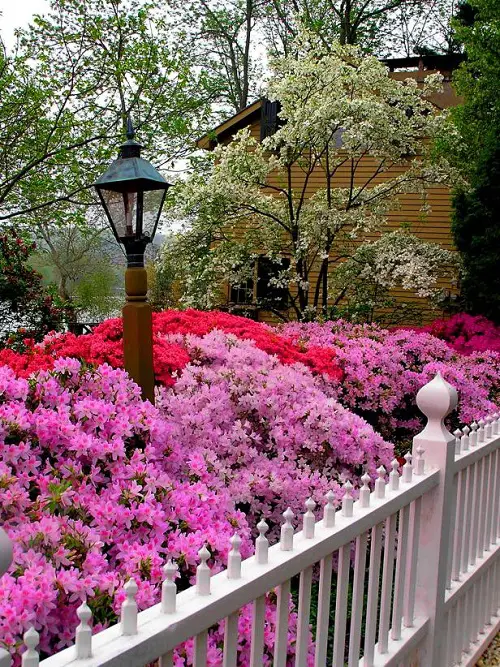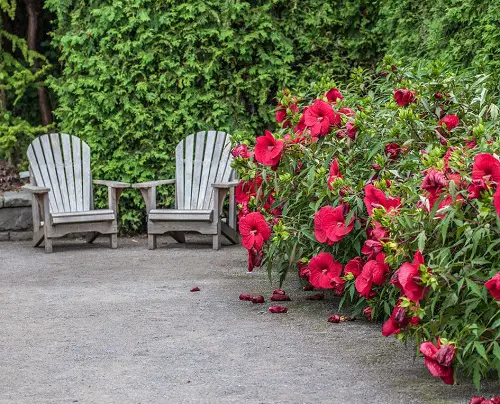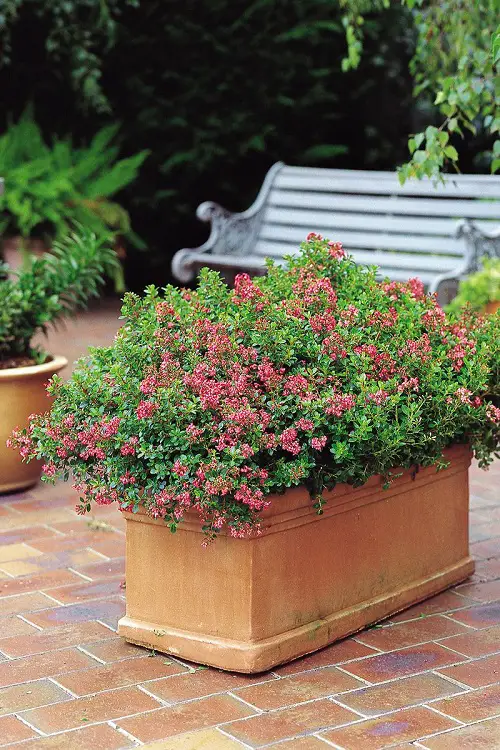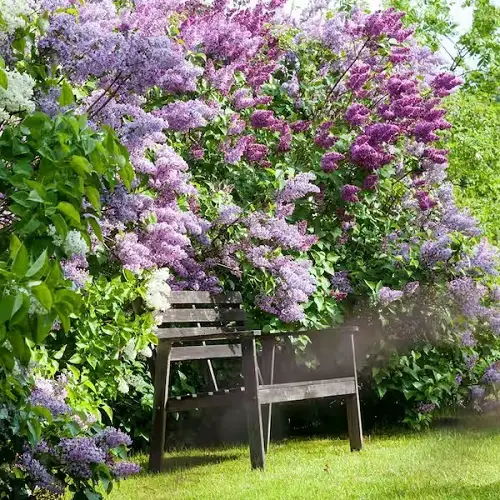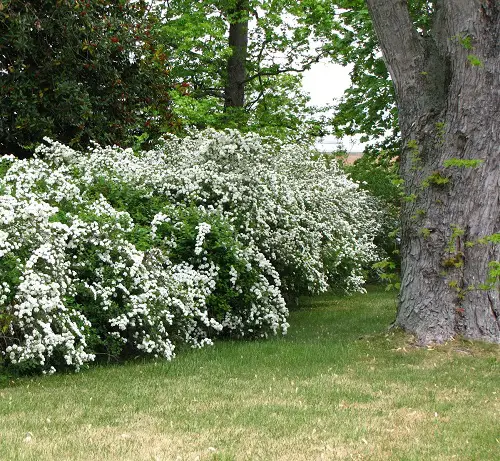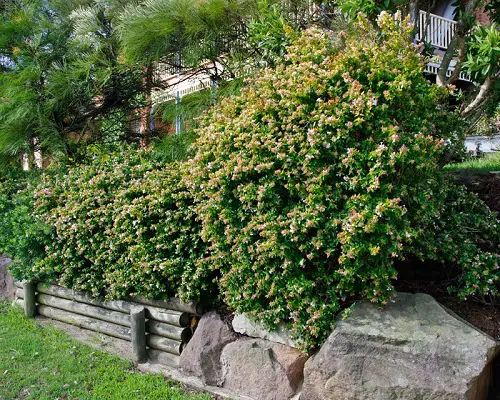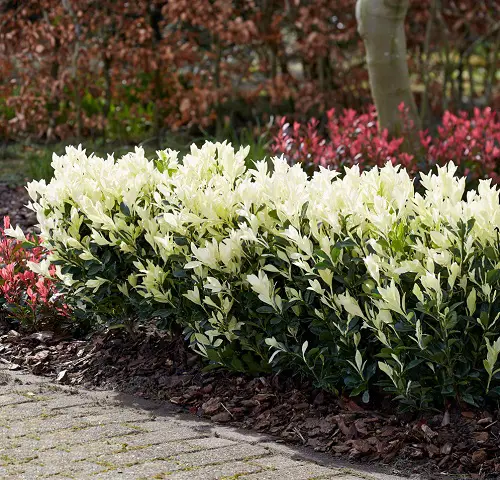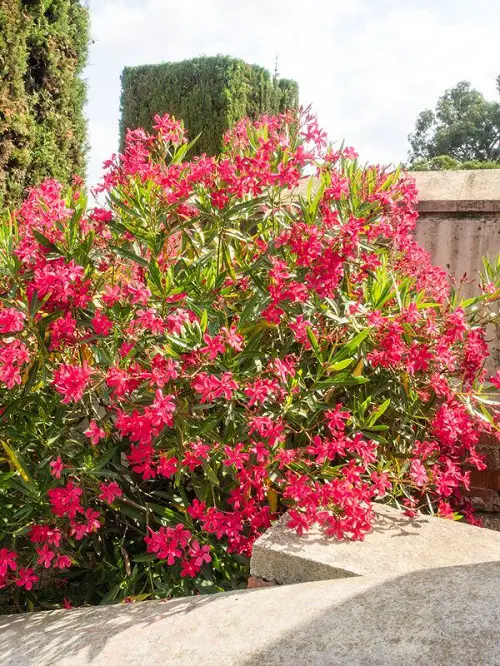Stop here! If you are looking for the Most Beautiful Flowers for Hedges that not only provide privacy but also add beauty to your space.
This exclusive list of flowers for hedges will surely make your space appealing and structure to your outdoor sanctuary.
Flowers for Hedges
1. Azalea
Botanical Name: Rhododendron
USDA Zones: 7-9
Azales can light up your garden borders with their vivid spring colors and trumpet-shaped flowers ranging from deep fuchsia to soft pastels. Their deciduous nature and smaller leaves make them an unobtrusive privacy choice!
2. English Lavender

Botanical Name: Lavandula angustifolia
USDA Zones: 5a-9b
Perfect for a low hedge or border, English lavender offers more than beauty with its aromatic leaves and blooms. Growing up to 3 feet wide. It brings a soothing scent to your space and is a haven for pollinators, enhancing any garden’s biodiversity.
3. Forsythia
Botanical Name: Forsythia x intermedia
USDA Zones: 5-8
The fast-growing forsythia sets early spring glowing with its yellow blossoms. Its natural growth pattern makes it an ideal choice for informal hedge settings, rapidly providing dense coverage.
4. Privet
Botanical Name: Ligustrum
USDA Zones: 4-7
Despite its plain white flowers, the privet’s real charm lies in its versatility and ease of shaping. It grows well in various conditions and responds excellently to pruning – a sure addition to your structured garden designs!
5. Hardy Hibiscus
Botanical Name: Hibiscus moscheutos
USDA Zones: 5-9
The hardy hibiscus is a robust perennial perfect for creating a dense floral display with a tropical touch. It offers large hollyhock-like blooms in shades of red, pink, white, or salmon.
6. Rose of Sharon
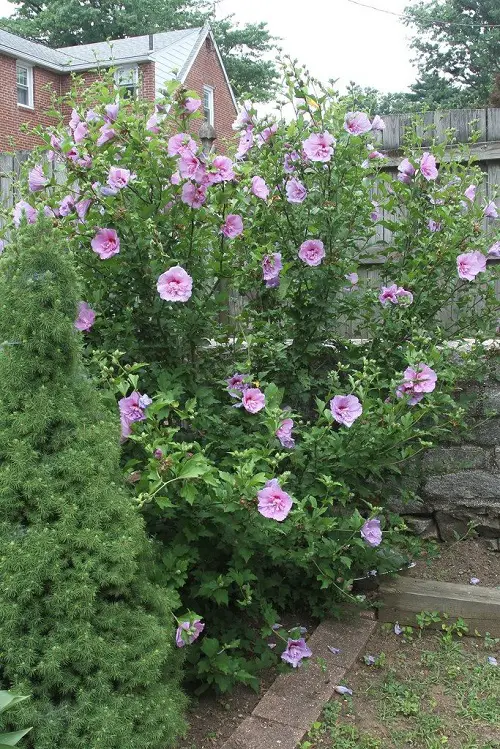
Botanical Name: Hibiscus syriacus
USDA Zones: 5-9
With its late-summer blossoms, Rose of Sharon keeps your garden lively when most other plants are past their peak. This shrub grows quickly, forming a lush barrier that’s as practical as it is pretty.
7. Weigela
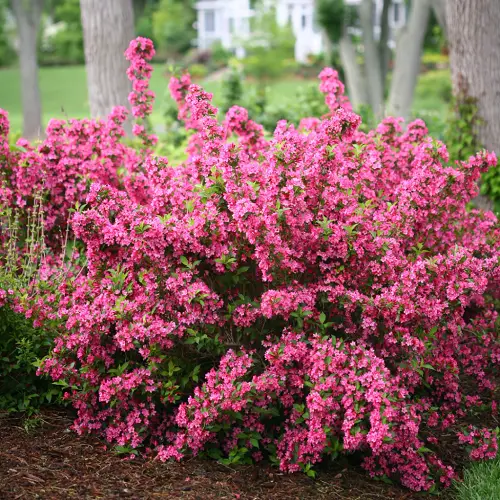
Botanical Name: Weigela florida
USDA Zones: 4-8
Weigela springtime flowers and attractive leaves are suitable for attracting hummingbirds. Undoubtedly, it’s a dynamic choice for gardeners looking to combine beauty with wildlife support. Try it!
8. Red Claws
Botanical Name: Escallonia rubra
USDA Zones: 8-9
Red Claws thrive in salt spray and bloom with white and rose-red flowers. Its rounded shape and bright color make it a standout choice for a flowering hedge in coastal areas.
9. Photinia
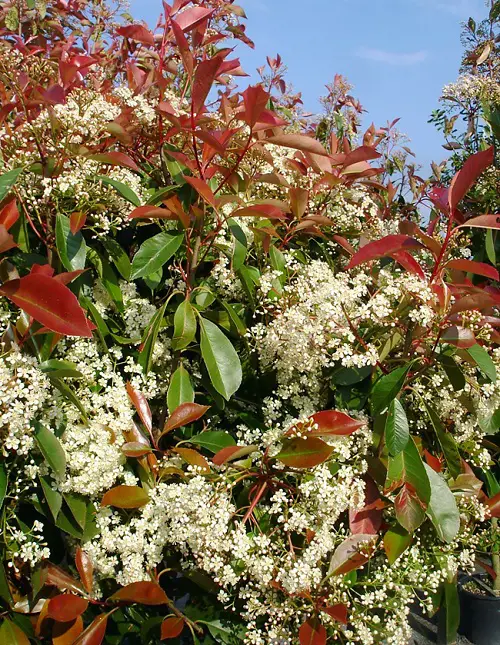
Botanical Name: Photinia x fraseri
USDA Zones: 7a-8b
Photinia offers a visual spectacle with its reddish-bronze new leaves and unique red buds. Despite its less pleasant-smelling flowers, its resilience to tough conditions makes it a robust choice for privacy screens.
Check out Best Plants for Hedging
10. Lilac
Botanical Name: Syringa spp.
USDA Zones: 3-7
Lilac is known for its clusters of purple, pink, mauve, or white flowers from mid to late spring. It needs full sun and well-draining soil to create lively borders in your landscape.
11. Shrub Rose

Botanical Name: Rosa
USDA Zones: 5-9
Shrub roses are the perfect decorative hedge option for beginners. They require little care, are disease-resistant, and can flourish in diverse conditions yet consistently produce blooms.
12. Bridalwreath Spirea
Botanical Name: Spiraea prunifolia
USDA Zones: 5-8
If you are looking for a classic hedge, the Bridalwreath Spirea, with its graceful arching branches adorned with clusters of white blossoms each mid-spring, is for you!
13. Hydrangea

Botanical Name: Hydrangea
USDA Zones: 3-7
Hydrangeas bloom from mid-summer to fall and have large flower heads ranging from round to cone-shaped, depending on the species. They thrive best in partial shade with ample moisture.
14. Glossy Abelia
Botanical Name: Linnaea x grandiflora
USDA Zones: 6a-9b
Glossy Abelia is a resilient and versatile shrub that blooms nearly year-round. Thanks to its dense foliage and subtle fragrance, it is perfect for creating dynamic hedges or privacy screens. It flourishes in a variety of planting conditions and locations.
Check out Beautiful Hedge Plants
15. Deutzia
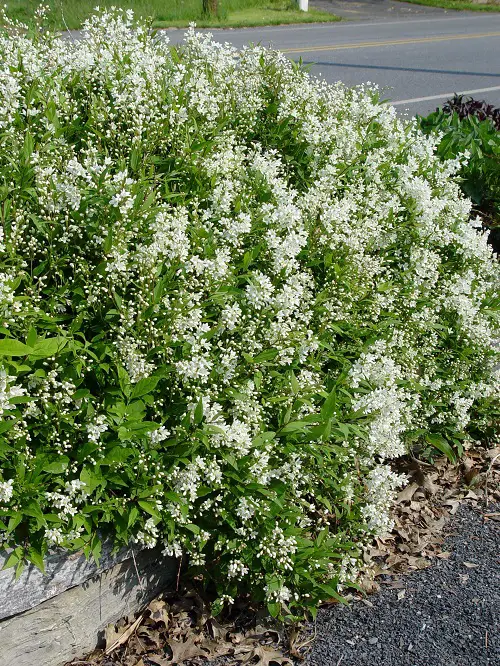
Botanical Name: Deutzia gracilis
USDA Zones: 5-8
The Deutzia shines in early spring and becomes densely covered with sweet-smelling, bell-shaped flowers, nearly obscuring its foliage. You can choose the compact, slender Deutzia or its taller counterpart, the showy Deutzia.
16. Flowering Quince
Botanical Name: Chaenomeles speciosa
USDA Zones: 5-9
The Flowering Quince creates a striking visual with its red, orange, white, or pink flowers against dark green foliage. Its thorny branches make it an effective barrier hedge!
17. Japanese Euonymus
Botanical Name: Euonymus japonicus
USDA Zones: 6a-9b
With its waxy, dark green leaves, Japanese Euonymus is a sturdy evergreen ideal for hedges or borders. This shrub is tolerant of various conditions, including drought and moderate salt spray, and can be pruned heavily to maintain desired shapes.
18. Oleander
Botanical Name: Nerium Oleander
USDA Zones: 8-10
Oleander blooms in shades of pink, white, red, orange, and yellow and lasts nearly all of the growing season. While it’s drought-resistant and thrives in full sun to partial shade, caution is advised as all parts of the plant are toxic.
19. Japanese Pittosporum
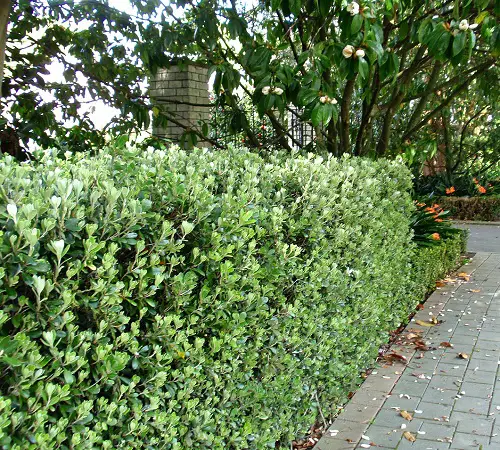
Botanical Name: Pittosporum tobira
USDA Zones: 8a-10b
This fast-growing evergreen (reaching up to 13 feet tall) offers a rich, dense canopy ideal for privacy screens, hedges, or as a standalone specimen. Japanese Pittosporum can also be potted on patios or grown as a houseplant in cooler climates.
Check out Tall Grass Privacy Ideas
20. False Holly
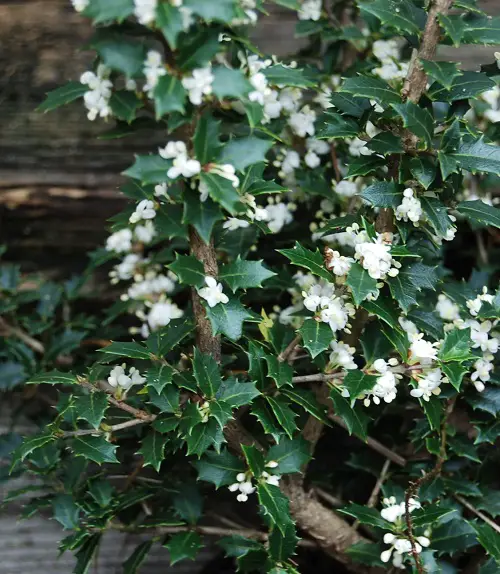
Botanical Name: Osmanthus heterophyllus
USDA Zones: 7a-9b
False Holly’s dense and spiky leaves are excellent for hedges and screens, providing robust greenery and privacy. It adapts well to various conditions, including urban settings, and is deer-resistant.
21. Arrowwood Viburnum
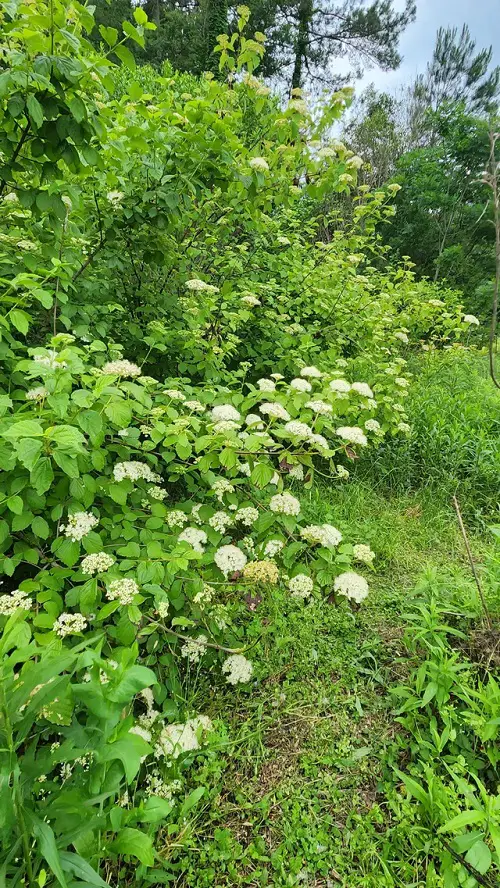
Botanical Name: Viburnum dentatum
USDA Zones: 2a-8b
Arrowwood viburnum is native to the eastern USA and is ideal for natural landscapes and informal hedges. Its white spring blossoms and blue-black berries in late summer attract wildlife, enhancing its appeal.
22. Mountain Laurels
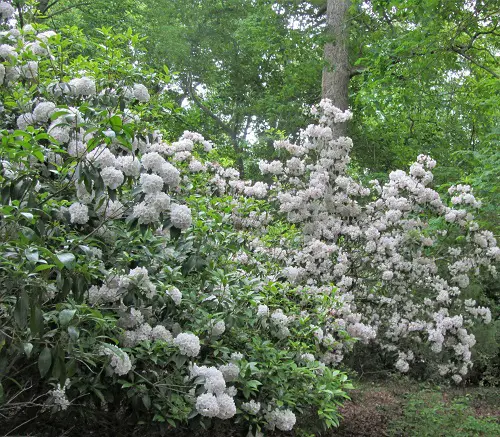
Botanical Name: Kalmia latifolia
USDA Zones: 4-9
Mountain laurels stand is an excellent choice for creating low-maintenance, evergreen hedges. Flourishing in partial to full sun exposure, these plants thrive in cool, moist, and well-drained acidic soils.
23. Acoma Crape Myrtle

Botanical Name: Lagerstroemia x ‘Acoma’
USDA Zones: 7-9
If you’re looking for a smaller yet impressive flowering hedge, consider the Acoma crape myrtle. This hybrid variety stands out with its modest height of 2-15 feet and a slightly narrower spread, making it suitable for various garden sizes.
24. Scarlet Firethorn
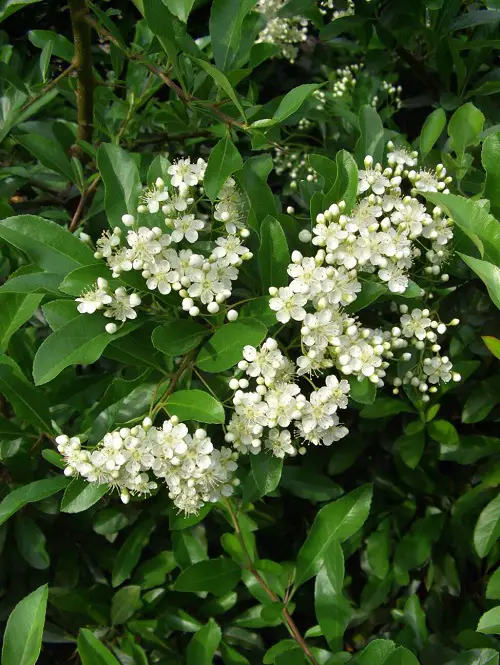
Botanical Name: Scarlet Firethorn
USDA Zones: 6-9
Scarlet firethorn is a thorny, semi-evergreen shrub with dark green oval leaves. From late spring to early summer, it produces pretty white flowers. You can also grow it as a wall, fence, or hedge!
25. Chaste Tree
Botanical Name: Vitex agnus-castus
USDA Zones: 7a-8b
The Chaste tree’s ability to be heavily pruned makes it an amazing candidate for hedges, offering privacy and aesthetic appeal without compromising on floral display.
Check out the Best Backyard Fence Ideas for Privacy
26. Firebush

Botanical Name: Hamelia patens
USDA Zones: 8-11
The plant produces clusters of tubular, reddish-orange, or scarlet flowers. Due to its growth habit and dense foliage, it can be pruned and shaped to form a hedge.


